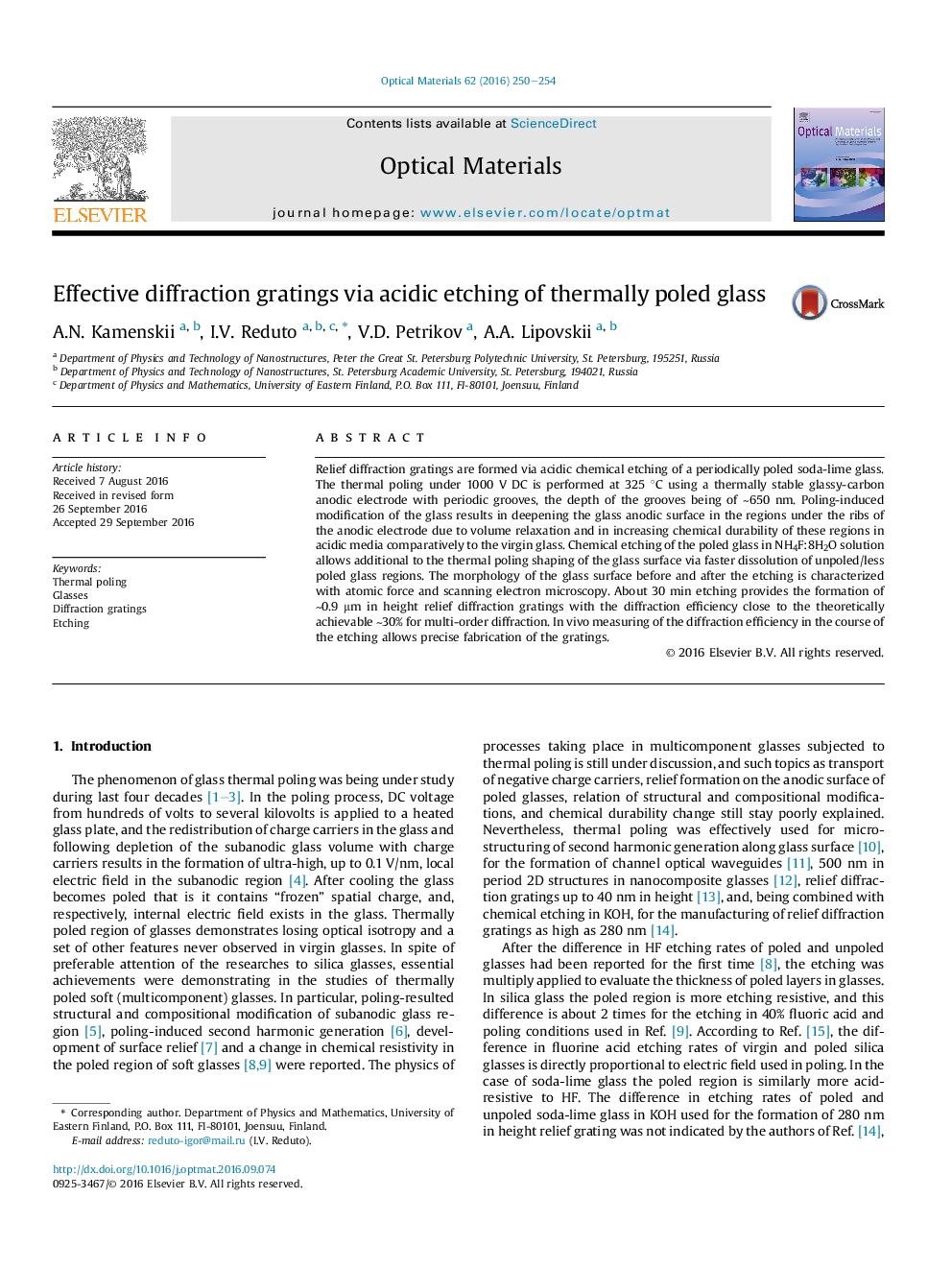| Article ID | Journal | Published Year | Pages | File Type |
|---|---|---|---|---|
| 5443036 | Optical Materials | 2016 | 5 Pages |
Abstract
Relief diffraction gratings are formed via acidic chemical etching of a periodically poled soda-lime glass. The thermal poling under 1000 V DC is performed at 325 °C using a thermally stable glassy-carbon anodic electrode with periodic grooves, the depth of the grooves being of â¼650 nm. Poling-induced modification of the glass results in deepening the glass anodic surface in the regions under the ribs of the anodic electrode due to volume relaxation and in increasing chemical durability of these regions in acidic media comparatively to the virgin glass. Chemical etching of the poled glass in NH4F:8H2O solution allows additional to the thermal poling shaping of the glass surface via faster dissolution of unpoled/less poled glass regions. The morphology of the glass surface before and after the etching is characterized with atomic force and scanning electron microscopy. About 30 min etching provides the formation of â¼0.9 μm in height relief diffraction gratings with the diffraction efficiency close to the theoretically achievable â¼30% for multi-order diffraction. In vivo measuring of the diffraction efficiency in the course of the etching allows precise fabrication of the gratings.
Related Topics
Physical Sciences and Engineering
Materials Science
Ceramics and Composites
Authors
A.N. Kamenskii, I.V. Reduto, V.D. Petrikov, A.A. Lipovskii,
